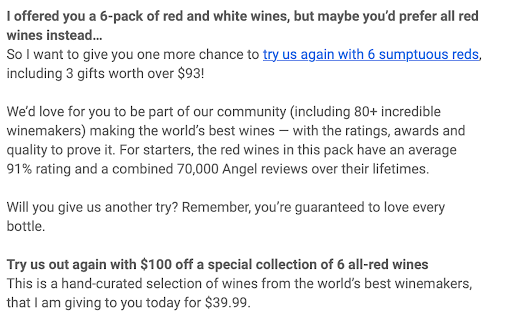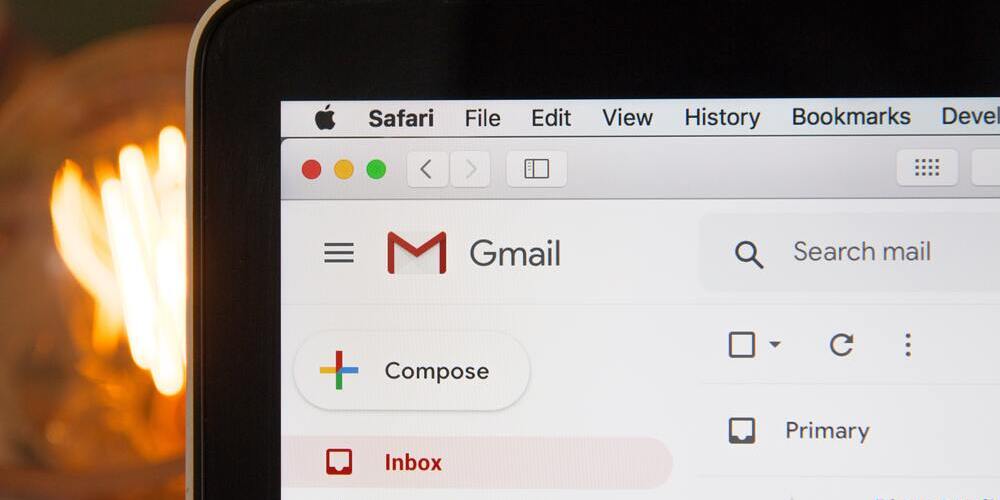If my dentist didn’t diligently remind me about my 6-month appointments, I’d definitely forget. One, because I scheduled it six months ago and who remembers things that long? And two, because I don’t think about the dentist until my tooth hurts.
Reminders are like brain excavation equipment. They bring things to the surface of our conscious thoughts that were buried in the hundreds of thousands of thoughts we’ve accumulated each day. And the same thing that would happen to my dentist appointment without reminders happens to brands all the time. People use their product or service, then forget about it until they have a dire need for it or are reminded it exists.
This is why email nurturing is such an important piece of your marketing strategy. It reminds people your brand is there and that they enjoyed your product. Plus, it plants a suggestion. Like when someone mentions ice cream and all you can think about after is how great sitting down with a pint of mint chocolate chip would be. Email nurturing works the same way. It reminds your customers that they want your product and creates a renewed need for it.
Why You Should Invest Time Into These 5 Nurture Series
Email marketing is an easy way to stay in touch with your customers and keep your brand top of mind. When a prospect gives you their email in exchange for something of value, you have the opportunity to offer more with every correspondence. Using email campaigns as part of a lead nurturing strategy gives you the chance to provide more value to your prospects while allowing your sales team more time to do what they do best—sell!
To free up your sales team, you’ll want to embrace automated emails. With the right CRM, you can set up entire email lists to receive a chain of lead nurturing emails, from welcome emails to abandoned cart emails, to help them move through the sales funnel at their own pace without forgetting you’re there with a solution. Automated emails give you the ability to nurture and keep leads warm without needing a team member to constantly monitor your inbox and juggle hundreds of prospects in different parts of the campaign.
So let’s dive into the five nurturing sequences you can use to offer value, build trust and convert leads.
Here’s Your Download Nurture Sequence
This is what most people usually think of when they think about an email series. The prospect downloads an eBook or some other deliverable from your website in exchange for giving you their email, and you follow up with a “thanks for downloading” message. Pretty simple, right? Here’s a practical example of how that campaign might look:
- Email 1: Thank them for downloading and provide a link to the content again in case they need it.
- Emails 2-3: Follow up with valuable, relevant content and consider using some video too. This is when you want to introduce a soft offer like a free trial or another type of “no strings attached” proposal.
- Email 4: Make a hard pitch for your offer. At this point in the sales process, prospects should be about ready to make their final decisions, so remind them why you’re a good choice.
- Final step: Add them to a long-term nurture sequence. (More on that later.)
👉 Also Read: How to Write a Killer Email Nurture Sequence
Webinar/Event Attendees Followup Sequence
This is a way to nurture leads who signed up for an event or webinar with your brand, whether or not they attended. You can vary your emails based on if they showed up or not — such as a subject line like “We missed you!” versus “Thanks for coming!” — or everyone can receive the same emails. It just depends on what works best for your brand and situation. Here are some email examples for this series:
- Email 1: Deliver a recording of the webinar or highlights of the event. This allows customers who didn’t attend to see what happened and those who did to be reminded of key points.
- Emails 2-3: Reiterate what you offered at the event and put a deadline on it. This type of marketing strategy helps to create a sense of urgency and can encourage leads to make a decision about your product or service.
- Email 4: LAST DAY! This email gets sent out on your established deadline to remind prospects it’s their last chance to take action.
- Final step: Add them to a long-term sequence and/or a list that will be used in other email marketing campaigns to promote future events.
Service Interest Nurture Sequence
This series is a bit more involved but can be incredibly effective. It requires a CRM that can trigger notifications based on a user viewing a specific page URL, like your landing page or product page. (Here at Lone Fir, we love HubSpot for this purpose.) When they do, it tells your sales team to follow up with that person based on what they viewed so they get a personalized email tailored to their interest.
For this specific type of series, we want the trigger based on the prospect viewing a service page. Not only is it a bottom-of-the-funnel action, which means they’re primed and ready to talk to you, but it also gives you very specific information about what they want from you.
- Email 1: The first email can be something simple like, “Hey, I saw you were checking out our content about X. I wanted to send over one of our recent articles about it. [link]” Then you can introduce yourself and offer your contact info in case they have any further questions.
- Email 2: This email reminds them you still exist. They’re still at the beginning of their buyer’s journey, so offer them another relevant article and remind them you’re there to help.
- Email 3-4: Now you can start talking about the service they’re interested in and present an offer if you have one.
- Email 5: Start dating or break up. If they buy, great! If they’re not showing interest, then you can let them know you’re always around to help them if they have any questions. Include a CTA so they know how to reach out in the future.
Long-Term Nurture Sequence
Just because people aren’t ready to buy from you right now doesn’t mean they never will. That’s what long-term lead nurturing campaigns are for. They keep your brand top of mind by continuing to provide value through a consistent stream of content. There isn’t much of a structured sequence for these campaigns because they can contain lots of different types of emails, but there are some basic methods and ideas you can use.
- Timeline: The sequence should be between six months and a year.
- Frequency: Don’t send emails as frequently as you would with other types of campaigns. Imagine long-term nurturing more like a slow drip campaign. Overall, keep things spaced out. But if you have a specific offer that addresses their pain points or demonstrated interests, you could ramp up the frequency at intervals that coincide with offers, then bring it back down when the deadline passes. These spikes can help reengage prospects.
- Content: Mixed media is your friend. Use a variety of content types such as blogs, videos, case studies, testimonials and Low-commitment offers as a way to engage with this more hesitant audience.
Reengagement Sequence
Email lists decay between 22.5% and 30% every year. People might unsubscribe, lose interest or no longer need your product or service. That’s okay. Your audience will shift over time; some people will fall out and new ones will hop on, but you always want to keep your eye on the people who have been riding with you for a while.
Even though some people will fall away from your brand, there are still others who are absolutely in your audience and need to be drawn back into the sales cycle. To do that, you need to get their attention and remind them how much they loved you when you first met. There are tons of ways to do this, but often an exciting gift or discount works wonders.
Check out this email I got from Naked Wines not too long ago. They send me these marketing emails every once in a while, but I particularly loved this variation of their standard templates.
 Maybe the reason I didn’t respond is that I’m really not a white wine kind of person and I’d much prefer a few bottles of good red wine, right? Seems logical enough.
Maybe the reason I didn’t respond is that I’m really not a white wine kind of person and I’d much prefer a few bottles of good red wine, right? Seems logical enough.
Their basic pitch is: “Hey, you can get your preferred wine right now for a pretty great price. And remember we’re like...pretty awesome. Also, if you don’t like them, you can have your money back so there’s basically no risk.” I have to say, if the reason I didn’t purchase before really was that I hated white wines, this might have worked.
Another approach to reengagement is to just ask if the person still wants to hear from you. You can offer a big button where they can unsubscribe or keep the emails coming based on their preferences. Giving them a clear way out makes them consciously decide if they want to keep seeing your emails.
If you’re worried about losing members on your list with this strategy, don’t. An unengaged prospect won’t boost your conversion rates or help your bottom line, so it’s better to focus your energy on people who are actively interested.
Put Nurture Sequences to Use
Automated email nurturing strategies help you streamline your workflows so new leads are given the attention they need while your sales team caters to the warmest leads. Email nurturing is an important part of digital marketing that keeps your brand in customers’ minds by offering value again and again after an initial engagement.
If you’re interested in implementing some of these lead nurturing series, but aren’t sure where to start, we’d love to help! We love talking about marketing strategy and we use automated email nurturing ourselves, so we can give you a first-hand account of what could work for your brand.
👉 Keep Reading: Why Email Marketing is Still Important






